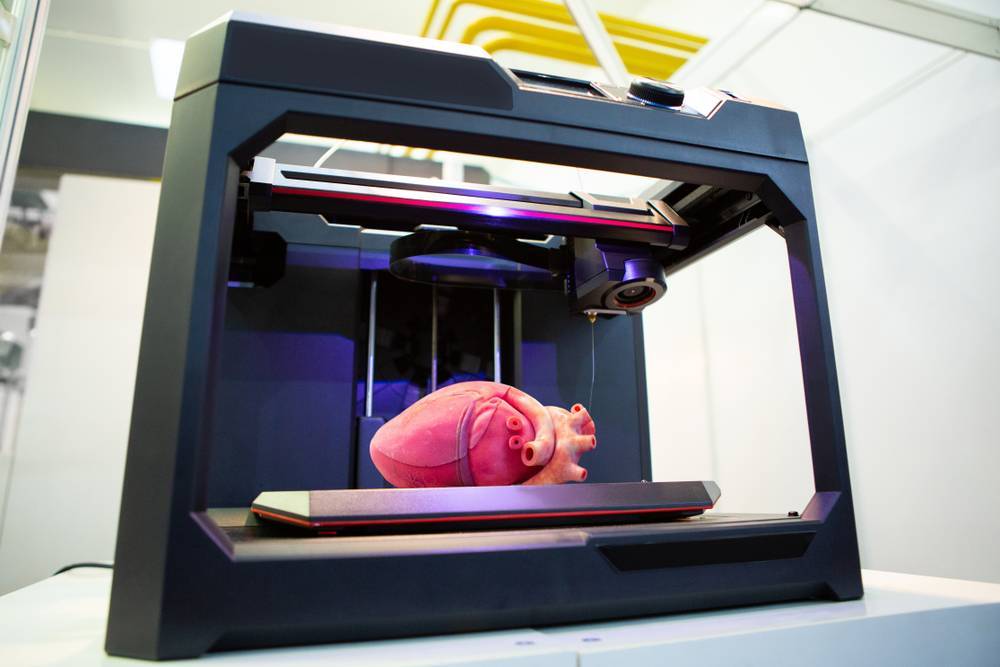3D-Printed Organs: Examining Transplant Medicine
3D-printed organs in transplantation mark a groundbreaking advance, reshaping how we approach organ shortages and compatibility issues. This technology, leveraging bioprinted tissues, offers hope for thousands awaiting transplants.
The Emergence of 3D-Printed Organs
3D bioprinting, a transformative approach in tissue engineering and regenerative medicine, fabricates complex biological constructs through controlled, layer-by-layer assembly of biomaterials. Originating in the 1980s with the invention of 3D printers, this technique evolved to include living cells, biomaterials, and biomolecules, termed ‘bioink’.
This technology encompasses various bioprinting modalities: extrusion, droplet, and laser-based, each employing distinct methods for depositing bioinks. Its applications span organ printing, tissue model fabrication for drug screening, and disease modelling, demonstrating its multifaceted utility in healthcare. However, challenges persist, notably in bioink development and ensuring cell-friendly printing processes, crucial for maintaining cell viability and function.
Recent advancements include the alignment of cells using acoustics and magnetism to mimic tissue micro-architecture, showcasing progress in overcoming bioprinting limitations. Despite these challenges, 3D bioprinting’s potential in revolutionising healthcare remains significant, driven by ongoing research and innovation.
The Process of Organ Fabrication
The fabrication of organs via 3D bioprinting is a complex and multistep process.
The process of creating a bioprinted organ begins with crafting an anatomically accurate 3D model using computer graphics software like CAD/CAM. Professionals then transform this 3D model into 2D layers, which they feed into a bioprinter. In the printing phase, they construct the organ layer by layer. A key component of this process is the use of bioinks. These bioinks, made up of biomaterials, cells, and other components, are essential for creating functional tissues such as the heart, liver, and skin.
Clinical Trials and Future Prospects
Moreover, clinical trials have underscored the potential of 3D-printed organs in transplantation. Given the dire scarcity of organ donors, with an alarming 18 people in the US dying daily due to a lack of suitable organs, the need for alternatives is clear. Consequently, 3D bioprinting emerges as a promising solution to this crisis, offering a potential global option for organ transplantation. Looking ahead, the future of bioprinting is likely to witness significant advancements in bioprinter technology, particularly with the integration of functional vasculature in grafts, which is essential for the long-term survival of cells.
The Future of Organ Transplantation
The future of organ transplantation, shaped by 3D bioprinting, is poised to address the critical shortage of donor organs.
This technology is instrumental in fabricating tissues with necessary mechanical, structural, and biological complexity, extending its potential beyond transplantation to areas like cancer research, drug testing, and organ-on-a-chip models. Despite the progress, challenges remain in clinical translation, but the ongoing research and development in bioprinting promise to revolutionise organ transplantation and broader medical applications.
References
- Dey, M., & Özbolat, B. T. (2020, August 18). 3D bioprinting of cells, tissues and organs. Scientific Reports. https://doi.org/10.1038/s41598-020-70086-y
- Matai, I., Kaur, G., Seyedsalehi, A., McClinton, A., & Laurencin, C. T. (2020, January 1). Progress in 3D bioprinting technology for tissue/organ regenerative engineering. Biomaterials. https://doi.org/10.1016/j.biomaterials.2019.119536
- Agarwal, S., Saha, S., Balla, V. K., Pal, A., Barui, A., & Bodhak, S. (2020, October 30). Current Developments in 3D Bioprinting for Tissue and Organ Regeneration–A Review. Frontiers in Mechanical Engineering. https://doi.org/10.3389/fmech.2020.589171

